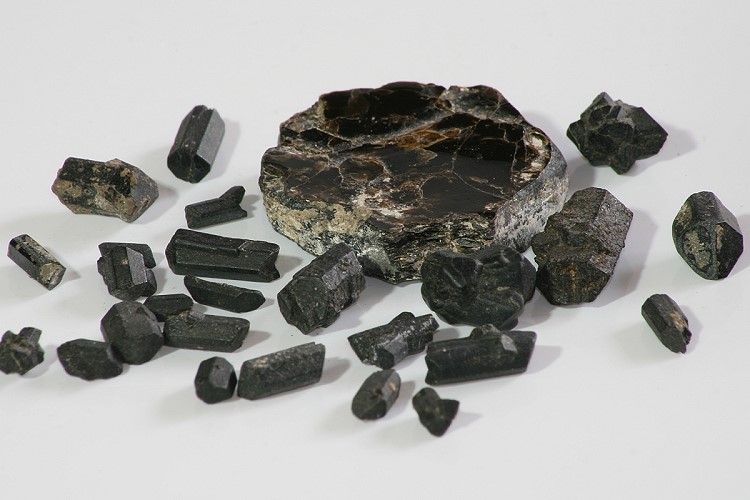
One biotite and several amphibole
The basic material of all volcanic rocks is the rock melt from the interior of the earth. In volcanology there are 2 terms for this rock melt: magma and lava. In everyday language the two terms are often used interchangeably, although there is a clearly defined difference. The molten rock is called magma as long as it is still in the earth's interior and contains many dissolved gases. Once the molten rock emerges from a volcano at the surface and most of the gases have escaped, it is called lava. Lava is largely degassed magma.
Although some lava flows are very fast flowing and look very fluid, one must not forget that they are much denser than water. Disaster movies have shown how people drive over a lava flow, or that they are trapped by lava flows and can no longer escape. The question arises, what is going to happen now? The answer is shown in the video above. It may actually be possible to run a few meters on a flowing lava flow. But this is only possible if the lava is already relatively cool (below 900 degrees) and no longer flows fast. At Ol Doinyo Lengai there is extremely low viscosity lava which is relatively cold and does not glow. Nevertheless it cannot carry a human. Whoever tries it nevertheless has to expect the worst burns. What the man in the video is doing should of course not be imitated carelessly. His workplace was Etna and he formed ashtrays out of the lava, which were sold as souvenirs. So he was very familiar with the raw material lava.
As soon as the lava cools and solidifies on the surface, a volcanic rock is formed. Not all magma emerges at the surface. Often it finishes its ascent from the mantle areas in the earth's crust and cools down slowly. Deep rocks called plutonites are formed. Volcanic rocks and plutonites belong to the group of magmatic rocks. Chemically, each plutonite has an equivalent vulcanite. The two types of rock differ primarily in their structure. Since the plutonites cool down over longer periods of time than the volcanic rock, the crystals have more time to grow. Thus the minerals of the plutonites have a larger grain size than the volcanic rocks.
The magma itself either comes from the earth's mantle, or is formed in the border area of the lower earth's crust and the upper earth's mantle. Since high pressures prevail at these depths, the rock there is predominantly plastic and behaves similar to plasticine. Under certain conditions (e.g. when water is added) it can melt, resulting in magma. Due to the difference in density between the melt and the surrounding rock, this begins to rise until it collects in a magma chamber. There it slowly begins to cool down and the first minerals crystallize out. This changes the composition of the remaining magma. This is known as a chemical differentiation of the magma, or its maturation. During an eruptive phase of a volcano, different types of lava can be produced from which different volcanic rocks are formed.
Crystals, which have already formed during the differentiation of the magma in the magma chamber, are found as coarse-grained inclusions in the rock. Frequent disseminations are olivines, which originate from the mantle rock peridotite, as well as pyroxene, amphibole, plagioclase and biotite. Foreign rock inclusions, the so-called xenoliths, originate from the surrounding rock of the magma chamber or the vent.